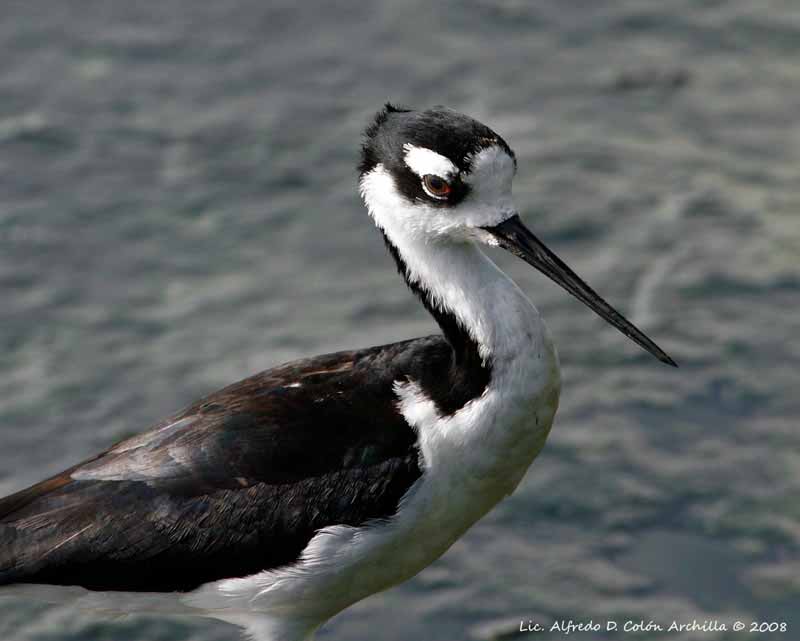
Black-necked Stilt
Himantopus mexicanus
Charadriiforme Order – Recurvirostridae Family
BIOMETRICS:
Length: 36-39 cm
Wingspan: 73 cm
Weight: 167 g
LONGEVITY: up to 5 years

DESCRIPTION:
Black-necked Stilt has glossy black upperparts, cap, hind neck, nape, back and wings. Underparts are white, throat, breast and belly. On the head, forehead and lores are white, and we can see a white spot above eyes. Tail and rump are white.
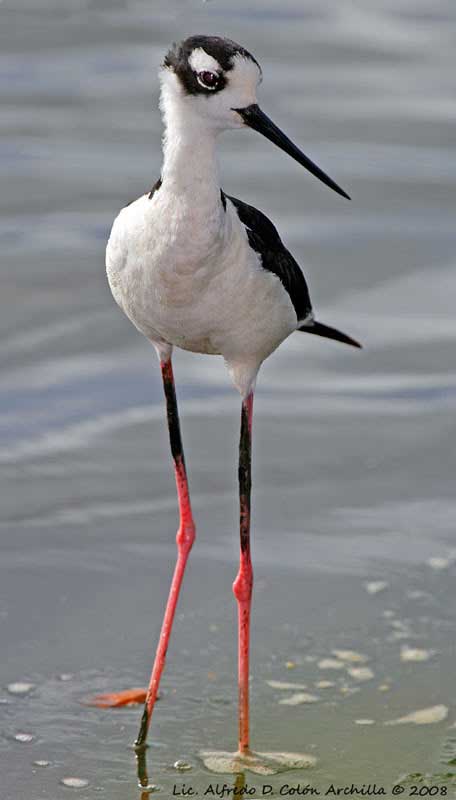
Long legs and feet are red or bright pink. Feet are partially webbed, allowing them to swim, but rarely do. Eyes are reddish-brown. Bill is long, very thin and black.
Female is similar, but browner than male on back.
Juvenile is brown above, with broad pale brown edges.
VOICE: SOUNDS BY XENO-CANTO
Common call of Black-necked Stilt is a loud “kek-kek-kek” and a monotonous series of loud piping sounds “yip-yip-yip”.
HABITAT:
Black-necked Stilt breeds and winters in a wide variety of wet habitats: mud flats, pool and grassy marshes, both fresh and brackish waters of shallow lakes.
RANGE:
Black-necked Stilt breeds across western and southern United States, and southwards through Caribbean and Central America to South America. A subspecies lives in Hawaii.
It winters from southern United States southwards.
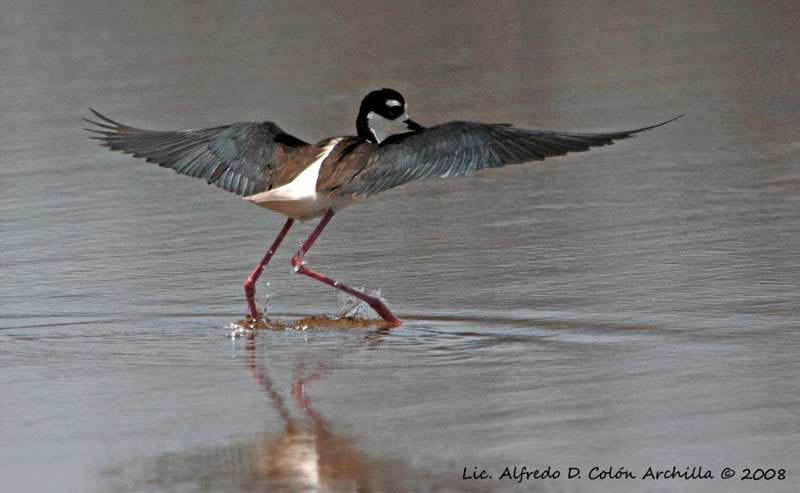
BEHAVIOUR:
Black-necked Stilt feeds in shallow water, wading or swimming. It may locate the food by sight. Sometimes, it may stick head underwater, or swipe head and bill through water. It probes in mud with slender bill. It runs very fast with partially raised wings and stops suddenly to pick up food from the ground.
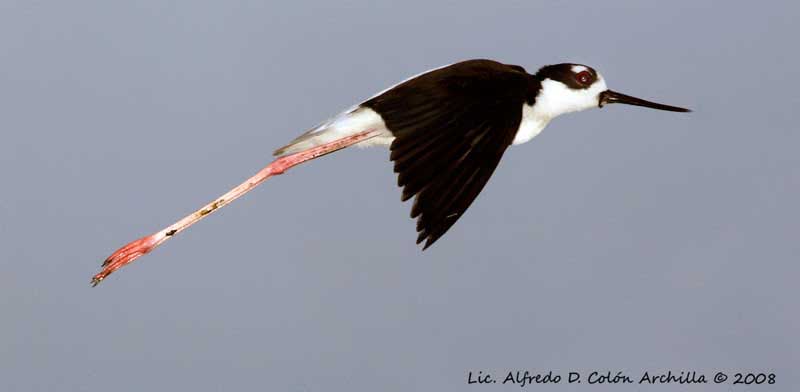
Black-necked Stilt is noisy. It is territorial and aggressive during breeding season. It may fly slowly over an intruder, uttering an alarm call.
When it is alarmed or agitated, it shrieks, it dives towards intruders, and it may feigns broken wing to attract predator away from nest; adults may participate jointly in anti-predator displays. They encircle the predator and hop side to side while they flap their wings. They are gregarious birds.
Black-necked Stilts live in hot environment and they have to cool off the nest. They may carry water in their ventral feathers to the nest, sometimes making more than 100 trips a day.
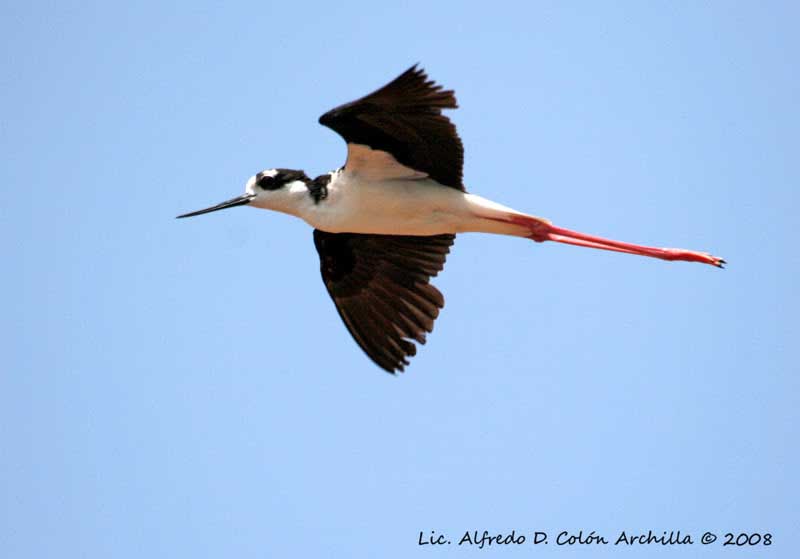
FLIGHT:
Black-necked Stilt flies with long legs trailing behind body, and head partially drawn back. Its flight is not very swift, but it is strong and steady, with sweeping strokes.
REPRODUCTION:
Black-necked Stilt’s nest is located on the ground. They nest in loose colonies of 6 to 10 nests. Both sexes choose nest site on a small island in a marsh. They build the nest in May. It is situated on a dry mud flat, or on a hummock. It chooses a place where it has a clear view all around in the marsh.
Nest is made in shallow depression with old grasses. Gradually, they add dry twigs, grass roots, shell fragments and debris. Nest needs to be high, to avoid flooding water.
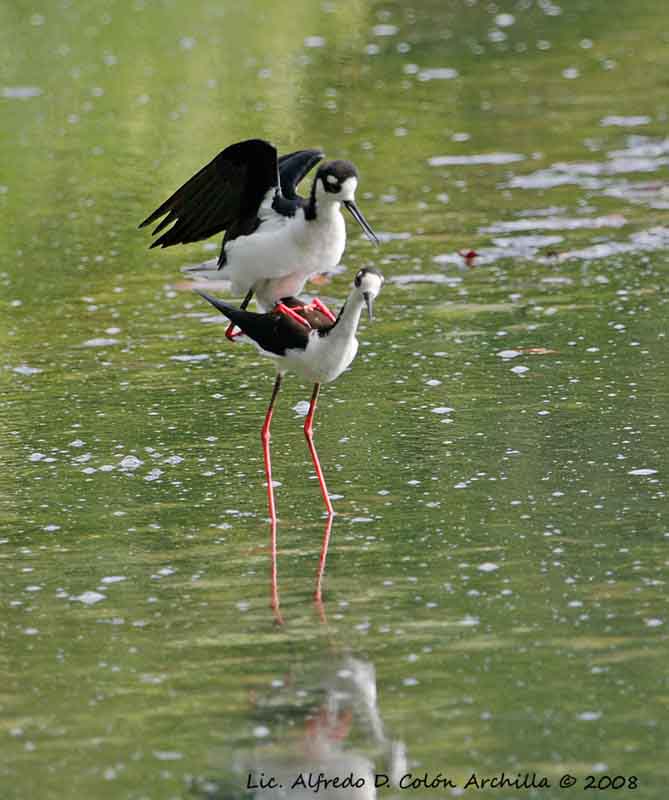
Female lays 3 to 4 brown eggs, spotted with buff. Incubation lasts about 22 to 25 days, by both adults. Male watches over nest site and chases away potential predators. Chicks hatch precocial and leave the nest within one to two hours of hatching. They are fed by both parents. They reach their sexual maturity at one year.
This species produces one brood per season.
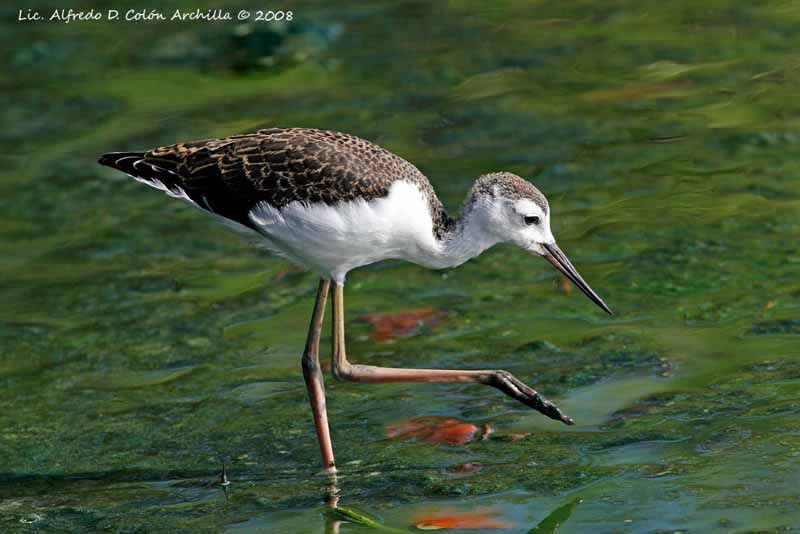
DIET:
Black-necked Stilt feeds on tadpoles, molluscs, aquatic insects, snails, small fish, flying insects, seeds of aquatic plants.
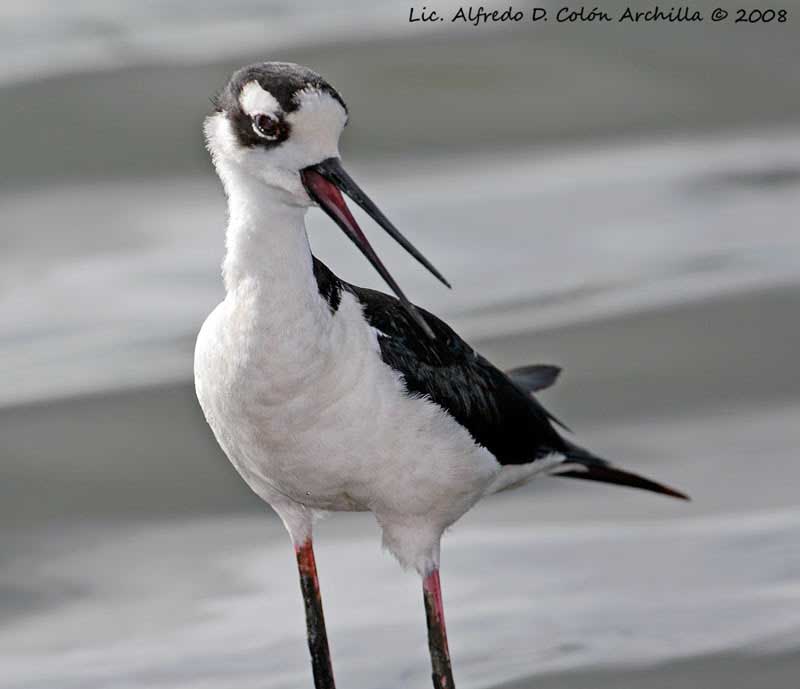
PROTECTION/ THREATS / STATUS:
Populations of Black-necked Stilt are affected by decrease of wetlands and habitat loss, but they use man-made structures for habitat, expanding their range.
The Hawaiian subspecies (Hawaiian Stilt) is endangered, due to hunting, habitat loss and introduced predators.
Fr: Echasse d’Amérique
All : Schwarznacken-Stelzenläufer
Esp : Cigüeñela de Cuello Negro
Ital : Cavaliere nordamericano
Nd : Amerikaanse Stelkluut
Sd : Amerikansk styltlöpare
Photos d’Alfredo Colón
Puerto Rico Wildlife
Texte de Nicole Bouglouan
Sources:
HANDBOOK OF THE BIRDS OF THE WORLD Volume 3 by Josep del Hoyo-Andrew Elliott-Jordi Sargatal - Lynx Edicions - ISBN : 8487334202
FIELD GUIDE TO THE BIRDS OF NORTH AMERICA - National Geographic Society - ISBN: 0792274512
All About Birds (Cornell Lab of Ornithology)
Bird Web (Seattle Audubon Society)
What Bird-The ultimate Bird Guide (Mitchell Waite)
Wikipedia (Wikipedia, The Free Encyclopedia)